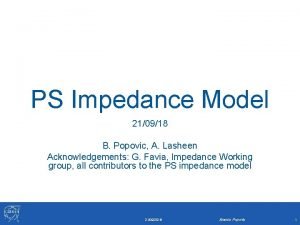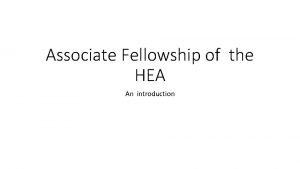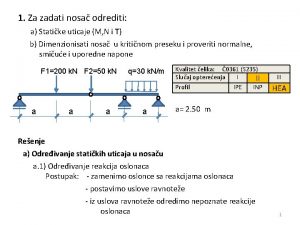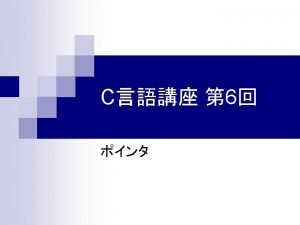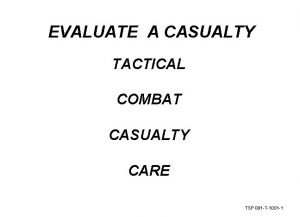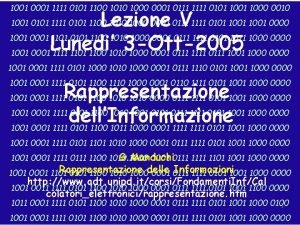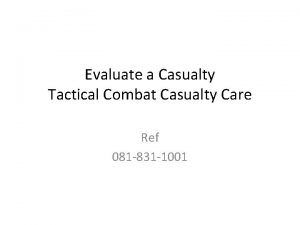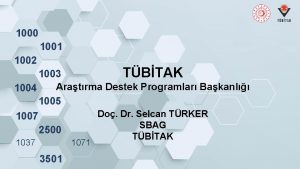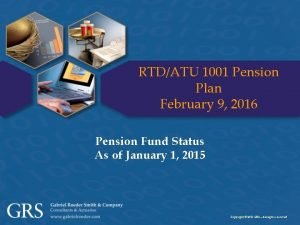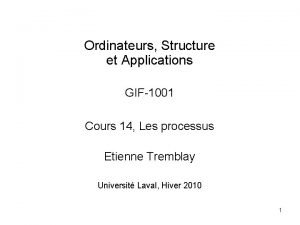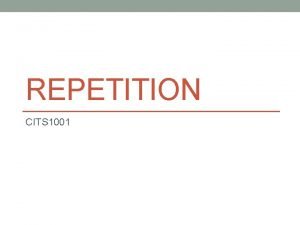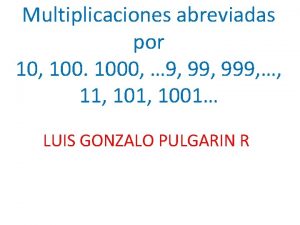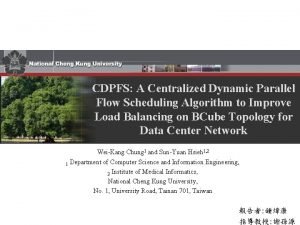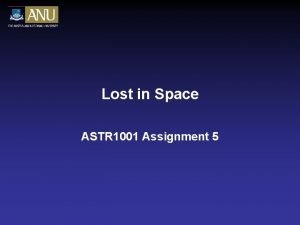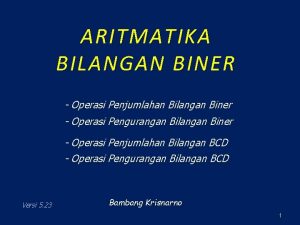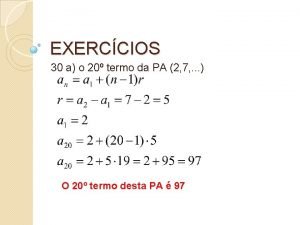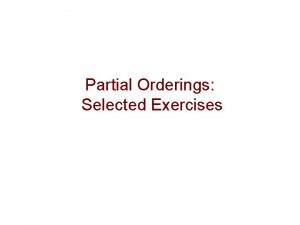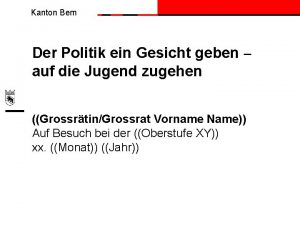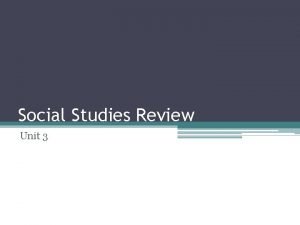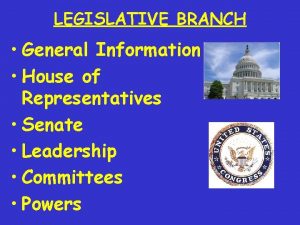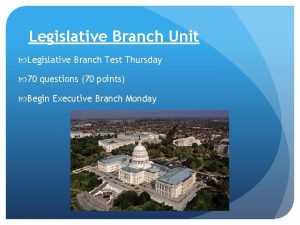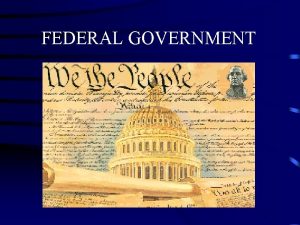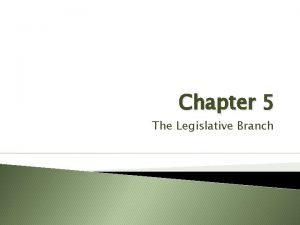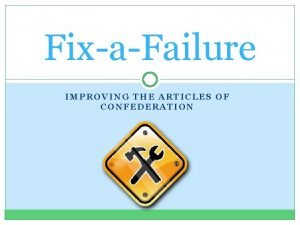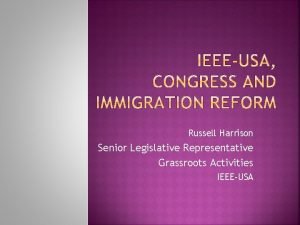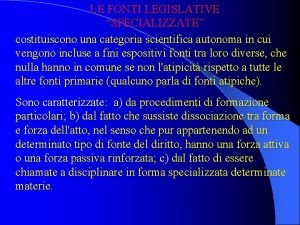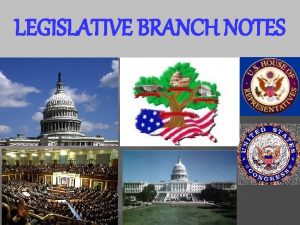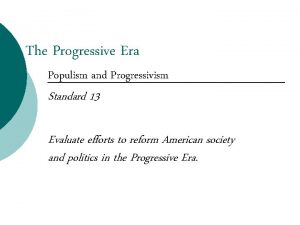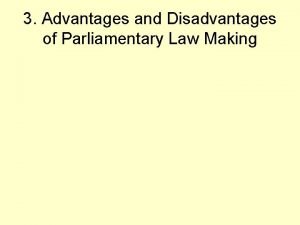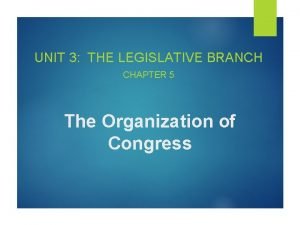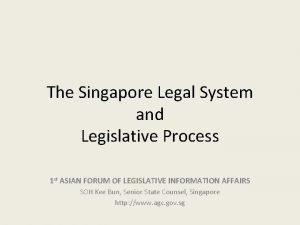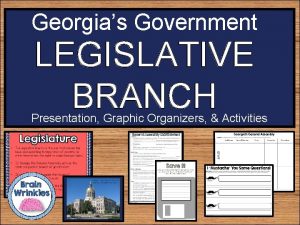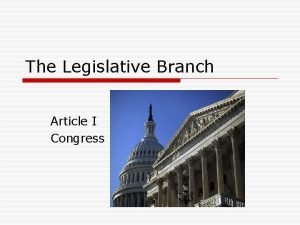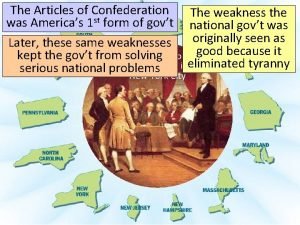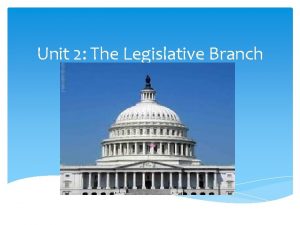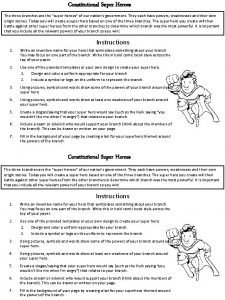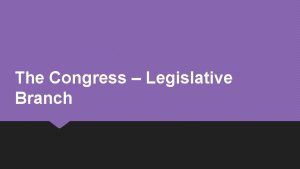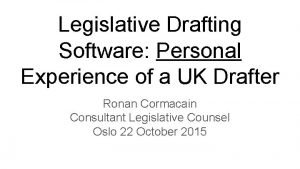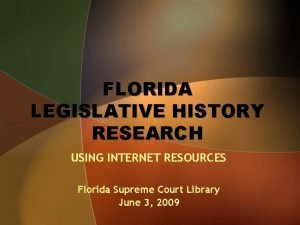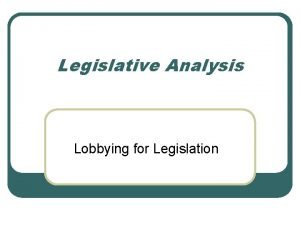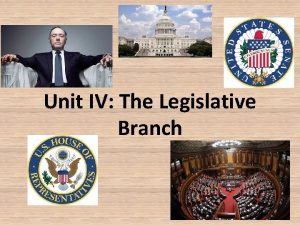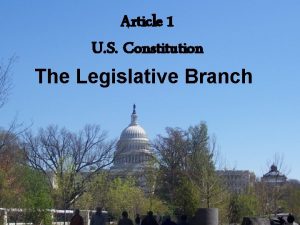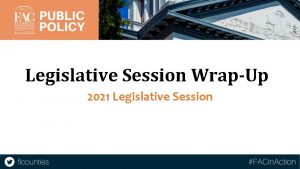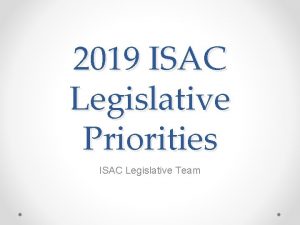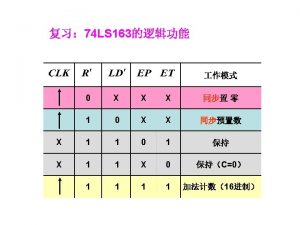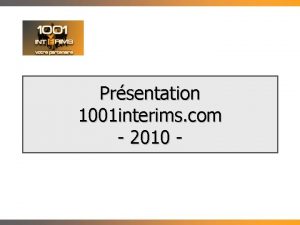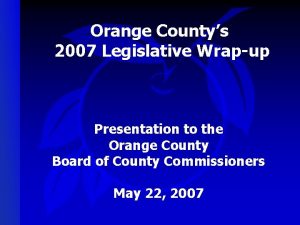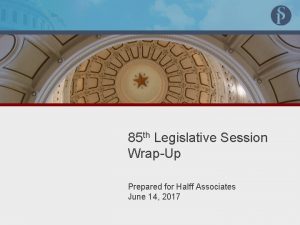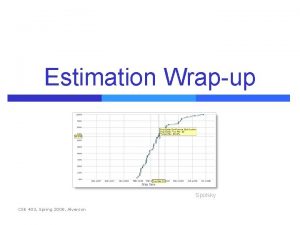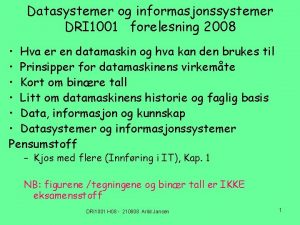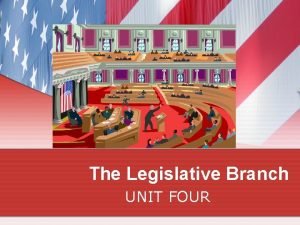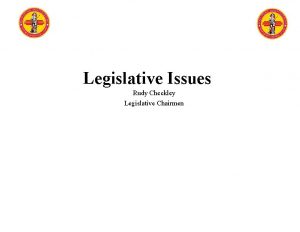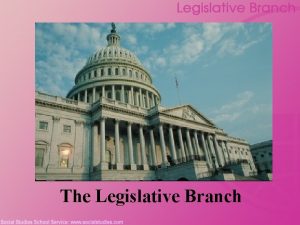2008 Legislative WrapUp HEA 1001 HEA 1001 Legislative







![HEA 1001 Property Tax Caps Phased in property tax cap [Sections 221 and 222] HEA 1001 Property Tax Caps Phased in property tax cap [Sections 221 and 222]](https://slidetodoc.com/presentation_image_h/7da4f1b576026c700a23e584dd4ccc98/image-8.jpg)



![HEA 1001 Property Tax Caps Inventory Assessed Value [Section 50] • Makes inventory AV HEA 1001 Property Tax Caps Inventory Assessed Value [Section 50] • Makes inventory AV](https://slidetodoc.com/presentation_image_h/7da4f1b576026c700a23e584dd4ccc98/image-12.jpg)
![HEA 1001 Property Tax Caps Fire Protection Territory [Section 177] • Applies to territories HEA 1001 Property Tax Caps Fire Protection Territory [Section 177] • Applies to territories](https://slidetodoc.com/presentation_image_h/7da4f1b576026c700a23e584dd4ccc98/image-13.jpg)

![HEA 1001 Property Tax Caps County/Municipal Relief [Section 221 and 222] • Lake and HEA 1001 Property Tax Caps County/Municipal Relief [Section 221 and 222] • Lake and](https://slidetodoc.com/presentation_image_h/7da4f1b576026c700a23e584dd4ccc98/image-15.jpg)

![HEA 1001 Distressed Unit Appeals Distressed Unit Appeal Board [Section 202] • Definition of HEA 1001 Distressed Unit Appeals Distressed Unit Appeal Board [Section 202] • Definition of](https://slidetodoc.com/presentation_image_h/7da4f1b576026c700a23e584dd4ccc98/image-17.jpg)
![HEA 1001 Distressed Unit Appeals Nine member appeal board [Section 203] • Director of HEA 1001 Distressed Unit Appeals Nine member appeal board [Section 203] • Director of](https://slidetodoc.com/presentation_image_h/7da4f1b576026c700a23e584dd4ccc98/image-18.jpg)
![HEA 1001 Distressed Unit Appeals Appeal board relief options [Section 207] • All affected HEA 1001 Distressed Unit Appeals Appeal board relief options [Section 207] • All affected](https://slidetodoc.com/presentation_image_h/7da4f1b576026c700a23e584dd4ccc98/image-19.jpg)
![HEA 1001 Distressed Unit Appeals Judicial Review of Board’s Determination [Section 209] • Distressed HEA 1001 Distressed Unit Appeals Judicial Review of Board’s Determination [Section 209] • Distressed](https://slidetodoc.com/presentation_image_h/7da4f1b576026c700a23e584dd4ccc98/image-20.jpg)
![HEA 1001 Local Option Income Tax (LOIT) [Section 332] Retains LOIT options from HEA HEA 1001 Local Option Income Tax (LOIT) [Section 332] Retains LOIT options from HEA](https://slidetodoc.com/presentation_image_h/7da4f1b576026c700a23e584dd4ccc98/image-21.jpg)
![HEA 1001 Local Option Income Tax Public Safety LOIT Eligible Expenses [Section 332] • HEA 1001 Local Option Income Tax Public Safety LOIT Eligible Expenses [Section 332] •](https://slidetodoc.com/presentation_image_h/7da4f1b576026c700a23e584dd4ccc98/image-22.jpg)

![HEA 1001 Local Option Income Tax LOIT Adoption [Section 867] Adoption Date Before Oct HEA 1001 Local Option Income Tax LOIT Adoption [Section 867] Adoption Date Before Oct](https://slidetodoc.com/presentation_image_h/7da4f1b576026c700a23e584dd4ccc98/image-24.jpg)







![HEA 1125 Excessive Levy Appeals Appeal for FY 2007 Shortfalls [Section 68] • Permits HEA 1125 Excessive Levy Appeals Appeal for FY 2007 Shortfalls [Section 68] • Permits](https://slidetodoc.com/presentation_image_h/7da4f1b576026c700a23e584dd4ccc98/image-32.jpg)



![HEA 1001 Control Boards and Budget Oversight of Non-Elected Boards [Section 163] • County HEA 1001 Control Boards and Budget Oversight of Non-Elected Boards [Section 163] • County](https://slidetodoc.com/presentation_image_h/7da4f1b576026c700a23e584dd4ccc98/image-36.jpg)
![HEA 1001 Control Boards and Budget Oversight Debt Approval of Non-Elected Boards [Section 164] HEA 1001 Control Boards and Budget Oversight Debt Approval of Non-Elected Boards [Section 164]](https://slidetodoc.com/presentation_image_h/7da4f1b576026c700a23e584dd4ccc98/image-37.jpg)




















![HEA 1001 Controlled Projects & Referenda Special Elections: [Section 194] • If no election HEA 1001 Controlled Projects & Referenda Special Elections: [Section 194] • If no election](https://slidetodoc.com/presentation_image_h/7da4f1b576026c700a23e584dd4ccc98/image-58.jpg)

















![HEA 1001 Legislative Wrap-Up School Construction Projects [Sections 313, 452, 453] • Requires Department HEA 1001 Legislative Wrap-Up School Construction Projects [Sections 313, 452, 453] • Requires Department](https://slidetodoc.com/presentation_image_h/7da4f1b576026c700a23e584dd4ccc98/image-76.jpg)



![HEA 1001 Legislative Wrap-Up Transfer of Assessing Duties [Section 834] The following are transferred HEA 1001 Legislative Wrap-Up Transfer of Assessing Duties [Section 834] The following are transferred](https://slidetodoc.com/presentation_image_h/7da4f1b576026c700a23e584dd4ccc98/image-80.jpg)


![HEA 1001 Legislative Wrap-Up Assessor Certification [Sections 669 & 712] • Employees of the HEA 1001 Legislative Wrap-Up Assessor Certification [Sections 669 & 712] • Employees of the](https://slidetodoc.com/presentation_image_h/7da4f1b576026c700a23e584dd4ccc98/image-83.jpg)
![HEA 1001 Legislative Wrap-Up Process to Remove Assessor from Office [Sections 81 and 678] HEA 1001 Legislative Wrap-Up Process to Remove Assessor from Office [Sections 81 and 678]](https://slidetodoc.com/presentation_image_h/7da4f1b576026c700a23e584dd4ccc98/image-84.jpg)


- Slides: 86

2008 Legislative Wrap-Up HEA 1001

HEA 1001 Legislative Wrap-Up Welcome & Opening Remarks Mayor John Ditslear, City of Noblesville Christine Altman, President, Hamilton County Commissioners Matthew Greller, IACT Executive Director David Bottorff, AIC Executive Director

HEA 1001 Legislative Wrap-Up These materials are intended for general information purposes only and do not constitute legal advice. The materials should not be used or relied upon as a substitute for a review of applicable statutes, regulations, rulings and court decisions. The reader should consult legal counsel to determine how laws apply to specific situations. These materials were prepared in April, 2008, and consequently, will not reflect changes in law subsequent to that date. These materials are not intended for reproduction without permission from Association of Indiana Counties (AIC) or the Indiana Association of Cities and Towns (IACT).

HEA 1001 Legislative Wrap-Up HEA 1001 Subject Items (Ann Cottongim) • Circuit Breaker • Special Taxing Districts • Distressed Unit Relief Appeal Board • Local Option Income Taxes • Reasons for State Withholding of Income Taxes • Levy Exceptions and Appeals • County Council Role with Municipal Budgets • Police and Fire Pension Funds (State Assumption)

HEA 1001 Property Tax Caps What is the property tax cap (aka: circuit breaker)? • Property tax cap based upon gross assessed value • A taxpayer’s NET tax liability cannot exceed a certain percent of the GROSS assessed value of the property • Capped percentage depends upon the property’s classification – homestead, residential, real and personal (commercial & industrial) properties

HEA 1001 Property Tax Caps Definition of Net Tax Liability Gross tax minus the homestead, replacement or other local credits: Gross tax $4, 000. 00 Replacement credit ($1, 000. 00) Homestead credit ($ 500. 00) Net Tax $2, 500. 00 Definition of Gross Assessed Value (AV) Dollar value assigned to property by the local assessor “Gross" AV does not include exemptions and deductions that most property is eligible for (except business inventory)

HEA 1001 Property Tax Caps
![HEA 1001 Property Tax Caps Phased in property tax cap Sections 221 and 222 HEA 1001 Property Tax Caps Phased in property tax cap [Sections 221 and 222]](https://slidetodoc.com/presentation_image_h/7da4f1b576026c700a23e584dd4ccc98/image-8.jpg)
HEA 1001 Property Tax Caps Phased in property tax cap [Sections 221 and 222] 2009 2010 • Residential homesteads 1. 5% 1. 0% • Agricultural, long-term care 2. 0% homestead residential, • All other real and personal 3. 5% 2. 5% non- 3. 0% property

HEA 1001 Property Tax Caps Phased in property tax cap • LSA estimates revenue loss at $524 million • Requires debt service to be funded first [Section 226] revenue losses will be borne by operating funds • Referendum approved debt is outside circuit breaker • Shortfalls cannot be made up by setting higher tax rates or by borrowing • Impact depends on the mix of properties in a taxing district, assessed value and tax rate

HEA 1001 Property Tax Caps Potential Circuit Breaker Tax Credits

HEA 1001 Property Tax Caps Potential Number of Affected Taxing Units
![HEA 1001 Property Tax Caps Inventory Assessed Value Section 50 Makes inventory AV HEA 1001 Property Tax Caps Inventory Assessed Value [Section 50] • Makes inventory AV](https://slidetodoc.com/presentation_image_h/7da4f1b576026c700a23e584dd4ccc98/image-12.jpg)
HEA 1001 Property Tax Caps Inventory Assessed Value [Section 50] • Makes inventory AV exempt (not a deduction) • Important in areas that are subject to 3% cap, such as a TIF or retail area. • Before HEA 1001, inventory (as a deduction) was part of gross AV and eligible/included in circuit breaker formula.
![HEA 1001 Property Tax Caps Fire Protection Territory Section 177 Applies to territories HEA 1001 Property Tax Caps Fire Protection Territory [Section 177] • Applies to territories](https://slidetodoc.com/presentation_image_h/7da4f1b576026c700a23e584dd4ccc98/image-13.jpg)
HEA 1001 Property Tax Caps Fire Protection Territory [Section 177] • Applies to territories established after July 31, 2001 • Before HEA 1001, fire territories did not have a maximum levy limitation for the first three years (year 4 capped at year 3 levy) • After HEA 1001, Fire Territory levy limited to growth factor as other fund levies are limited • New Fire Territories will be asked for an initial max levy in their first year just like any other “new” taxing unit • Fire Territory Growth cannot exceed AVGQ minus 1. – How will DLGF interpret AVGQ minus 1? • If AVGQ is 4. 0%, growth cannot exceed 3. 0% (4. 0 – 1. 0) • If AVGQ is 1. 04, growth cannot exceed. 04 (1. 04 - 1. 0=. 04)

HEA 1001 Property Tax Caps Special Taxing Districts and Property Tax Caps • Caps are applied to “all units of local government and school corporations” – this includes special taxing districts • Not exempt from caps set forth in HEA 1001 – – Park Districts Sanitary Districts Redevelopment Districts Conservancy Districts - Storm Water Districts - Solid Waste Districts - Water Districts
![HEA 1001 Property Tax Caps CountyMunicipal Relief Section 221 and 222 Lake and HEA 1001 Property Tax Caps County/Municipal Relief [Section 221 and 222] • Lake and](https://slidetodoc.com/presentation_image_h/7da4f1b576026c700a23e584dd4ccc98/image-15.jpg)
HEA 1001 Property Tax Caps County/Municipal Relief [Section 221 and 222] • Lake and St. Joseph Counties – debt and lease payments issued prior to July 1, 2008 are outside of the circuit breaker calculation [Section 858 non-code] School Relief [Section 456] • Provides $120 million to offset the revenue loss for schools that have an impact of greater than 2% of the levy – $50 million for 2009 – $70 million for 2010 • Allows schools to have a referendum to offset Circuit Breaker impacts [Section 495]

HEA 1001 Distressed Unit Appeals Distressed Unit Appeal Board • Revises legislation enacted last year (HEA 1478) – Changes name from Circuit Breaker Relief Board [Section 201] – Adds two new appointments to the Board [Section 203] – Allows a single distressed political subdivision to petition for relief [Section 205] (instead of two or more units within county)
![HEA 1001 Distressed Unit Appeals Distressed Unit Appeal Board Section 202 Definition of HEA 1001 Distressed Unit Appeals Distressed Unit Appeal Board [Section 202] • Definition of](https://slidetodoc.com/presentation_image_h/7da4f1b576026c700a23e584dd4ccc98/image-17.jpg)
HEA 1001 Distressed Unit Appeals Distressed Unit Appeal Board [Section 202] • Definition of a distressed political subdivision – A political subdivision that expects to have at least a 5% reduction in property tax collections as a result of the application of the circuit breaker
![HEA 1001 Distressed Unit Appeals Nine member appeal board Section 203 Director of HEA 1001 Distressed Unit Appeals Nine member appeal board [Section 203] • Director of](https://slidetodoc.com/presentation_image_h/7da4f1b576026c700a23e584dd4ccc98/image-18.jpg)
HEA 1001 Distressed Unit Appeals Nine member appeal board [Section 203] • Director of OMB • Commissioner of DLGF • Commissioner of Department of Revenue • State Examiner for the State Board of Accounts • Appointment by the Speaker of the House (4 yr term) • One non-elected gubernatorial appointment • Three gubernatorial appointments (elected officials) – Nominee of IACT – Nominee of AIC – Nominee of Superintendents Association
![HEA 1001 Distressed Unit Appeals Appeal board relief options Section 207 All affected HEA 1001 Distressed Unit Appeals Appeal board relief options [Section 207] • All affected](https://slidetodoc.com/presentation_image_h/7da4f1b576026c700a23e584dd4ccc98/image-19.jpg)
HEA 1001 Distressed Unit Appeals Appeal board relief options [Section 207] • All affected units within the county must adopt a resolution agreeing to the distressed unit’s financial plan • Board can authorize any of these relief mechanisms – Increase the circuit breaker percentage in the distressed political subdivision (Ex: From 1% to 2%) – Allow for percentage reductions to other local credits provided in the political subdivision – Remove some or all of the taxes payable to bonds, leases or other obligations when calculating the credit
![HEA 1001 Distressed Unit Appeals Judicial Review of Boards Determination Section 209 Distressed HEA 1001 Distressed Unit Appeals Judicial Review of Board’s Determination [Section 209] • Distressed](https://slidetodoc.com/presentation_image_h/7da4f1b576026c700a23e584dd4ccc98/image-20.jpg)
HEA 1001 Distressed Unit Appeals Judicial Review of Board’s Determination [Section 209] • Distressed unit may petition to Indiana Tax Court for judicial review of Distressed Unit Appeal Board decision • Petition must be filed in tax court within 45 days after board makes final decision • Tax court will grant relief if distressed unit has been prejudiced by certain actions of the Board
![HEA 1001 Local Option Income Tax LOIT Section 332 Retains LOIT options from HEA HEA 1001 Local Option Income Tax (LOIT) [Section 332] Retains LOIT options from HEA](https://slidetodoc.com/presentation_image_h/7da4f1b576026c700a23e584dd4ccc98/image-21.jpg)
HEA 1001 Local Option Income Tax (LOIT) [Section 332] Retains LOIT options from HEA 1478 -2007 for: A. Replacement of allowable levy growth (1% maximum) B. B. Property tax relief (1% maximum) in the form of local ptrc, homestead credits or general property tax replacement relief for all taxpayers C. Public safety expenditures (up to. 25%) – Permitted only if LOIT is also adopted for either option A or B – Permitted if A and B are adopted at a minimum of. 25% combined
![HEA 1001 Local Option Income Tax Public Safety LOIT Eligible Expenses Section 332 HEA 1001 Local Option Income Tax Public Safety LOIT Eligible Expenses [Section 332] •](https://slidetodoc.com/presentation_image_h/7da4f1b576026c700a23e584dd4ccc98/image-22.jpg)
HEA 1001 Local Option Income Tax Public Safety LOIT Eligible Expenses [Section 332] • Police/law enforcement systems • Firefighting and fire prevention systems • Emergency ambulances and emergency medical services • Emergency action (environmental clean up) • Probation programs • Community corrections programs • Juvenile detention centers and facilities • County jail • Communications/enhanced emergency telephone systems • Medical and health care expenses for inmates • Pension payments

HEA 1001 Local Option Income Tax LOIT Adoption (no change from HEA 1478) • CAGIT Counties – Adopted by County Council • COIT Counties – Adopted by COIT Council • No municipal adoption mechanism • Lake County – County Council is adopting body for any local income tax options • Requires adopting body to hold annual public meeting to impose or increase rate for levy replacement LOIT or Option A [Section 331]
![HEA 1001 Local Option Income Tax LOIT Adoption Section 867 Adoption Date Before Oct HEA 1001 Local Option Income Tax LOIT Adoption [Section 867] Adoption Date Before Oct](https://slidetodoc.com/presentation_image_h/7da4f1b576026c700a23e584dd4ccc98/image-24.jpg)
HEA 1001 Local Option Income Tax LOIT Adoption [Section 867] Adoption Date Before Oct 1, 2008 Effective Date Oct 1, 2008 After Sept 30 & before Oct 16, 2008 Nov 1, 2008 After Oct 15 & before Nov 16, 2008 Dec 1, 2008 After Nov 15 & before Jan 1, 2009 NOTE: After 2008, LOIT can only be adopted between April 1 and July 31

HEA 1001 Local Option Income Tax LOIT Allocations • Permits units to receive LOIT allocations that would otherwise be lost as a result of the elimination of levies [Section 228] • Removes welfare levies from the levy freeze LOIT distribution formula [Section 331 and 334] • Allows a unit to dedicate public safety LOIT to another taxing unit or to pool together for project [Section 332 and 342]

HEA 1001 Local Option Income Tax Department of Revenue – LOIT Reporting [Sections 321 and 322] • Requires employers (and individuals filing estimated payments) to separate amounts paid between state and county liability • Requires Department of Revenue to develop reports and procedures to ensure accurate distributions to counties • Requires Commission on State Tax & Financing Policy to study LOIT allocation alternatives

HEA 1001 LOIT Withholding • The DLGF may order the withholding of the entire distributions, or a percentage of the distributions, of CAGIT, COIT, or CEDIT, if: – 1) Local assessing officials have not provided information to DLGF in a timely manner. – 2) The County Assessor has not transmitted required parcel and personal property data to the DLGF by October 1. – 3) The County Auditor has not timely paid to the DLGF a bill for a state-conducted assessment or reassessment. – 4) The County Assessor has not timely forwarded sales disclosure form data to the DLGF.

HEA 1001 LOIT Withholding • Continued…. the DLGF may order the withholding of CAGIT, COIT, or CEDIT, if: – 5) The County Auditor has not forwarded duplicate copies of all approved exemption applications by August 1 as required in IC 6 -1. 1 -11 -8(a) – 6) By the date the distribution is scheduled to be made, the County Auditor has not sent a certified statement of Assessed Values and other information that is required to be sent to political subdivisions by August 1. – 7) The county does not maintain a certified computer system that meets the requirements of IC 6 -1. 1 -31. 5 -3. 5 – 8) The county auditor has not timely transmitted by March 1, to the DLGF, electronic data files of information contained on the tax duplicate for all parcels and personal property returns.

HEA 1001 LOIT Withholding • • The DLGF may order the withholding of the entire distributions, or a percentage of the distributions, of CAGIT, COIT, or CEDIT, if: – 9) The county has not timely established a parcel index numbering system. – 10) “A county official has not provided other information to the DLGF in a timely manner as required by the DLGF. ” If a county that has not adopted LOIT (Lake County), the DLGF may withhold other state revenues that would otherwise be distributed to the county or other taxing units in the county.

HEA 1001 Excessive Levy Appeals “Old” Levy Appeals (6 -131 -18. 5 -13 through 16) Annexation Operation of a New Court Three Year Growth Volunteer Fire Expenses Fire Contract with Muni Police & Fire Pensions Township Assistance Public Transportation Hazardous Material Disposal Property Tax Shortfall Correction of Error Voting System Firefighting Services Solid Waste New Jail/Juvenile Detention Facility

HEA 1001 Excessive Levy Appeals Repeals Most Excess Levy Appeals/Six Remaining [Section 180 (IC 6 -1. 1 -18. 5 -13)] • Appeal for lack of adequate funds to carry out functions – Requires appeal to be due to natural disaster, an accident or unanticipated emergency • Restructures the new facility appeal for schools • Shortfall levy appeal • Appeal for correction of math errors and erroneous AV • Levy Growth Appeal • Excess levy for annexation, consolidation or other extensions of governmental services (allows four year phase in of permissible levy increases)
![HEA 1125 Excessive Levy Appeals Appeal for FY 2007 Shortfalls Section 68 Permits HEA 1125 Excessive Levy Appeals Appeal for FY 2007 Shortfalls [Section 68] • Permits](https://slidetodoc.com/presentation_image_h/7da4f1b576026c700a23e584dd4ccc98/image-32.jpg)
HEA 1125 Excessive Levy Appeals Appeal for FY 2007 Shortfalls [Section 68] • Permits a unit to file excessive levy appeal due to shortfall of 2007 property tax collections by May 1 http: //www. in. gov/dlgf/pdfs/2007_Excessive_Levy_Appeal_Memo. pdf • Some taxing units may not have received final tax draw for 2007 and would not know if they have a 2007 shortfall by May 1.

HEA 1001 Control Boards and Budget Oversight *No changes to spending and levy limits under current law • Repeals County Board of Tax and Capital Projects Review [Section 801] • Revives Local Government Tax Control Boards (TAB) - Removes sunset date of December 31, 2008 [Section 178] - Reinstates County Board of Tax Adjustment [Section 260] • County Council shall perform non-binding review of civil unit budgets [Section 148]

HEA 1001 Control Boards and Budget Oversight County Council non-binding review of civil unit budgets [Section 148] • Does not apply to units in a county with the TAB or to Marion County/Indianapolis and non-elected boards • All other civil units files the following with County Council – Proposed tax rate and levy for ensuing budget year – Copy of civil unit’s proposed budget for ensuing year • Must be filed 15 days before civil unit fixes tax rates and levies and adopts its budget

HEA 1001 Control Boards and Budget Oversight County Council non-binding review of civil unit budgets [Section 148] • County Council must review and issue recommendations • Recommendation must include increase comparisons for – Increases over statewide and county 6 year average increase in nonfarm personal income; and – Increases in budgets/tax levies of other units within the county • HB 1001 does not provide deadline for County’s response or who they issue it to (taxing unit, DLGF or both? )
![HEA 1001 Control Boards and Budget Oversight of NonElected Boards Section 163 County HEA 1001 Control Boards and Budget Oversight of Non-Elected Boards [Section 163] • County](https://slidetodoc.com/presentation_image_h/7da4f1b576026c700a23e584dd4ccc98/image-36.jpg)
HEA 1001 Control Boards and Budget Oversight of Non-Elected Boards [Section 163] • County Council or City/Town Council shall approve proposed budgets of non-elected boards (excluding school corporations) if their budget increases by more than the Assessed Value Growth Quotient minus 1 (AVGQ – 1) – City/Town Council approve budgets of units where AV of taxing unit is located entirely in the city/town OR if the unit was originally established by the city or town. – County Council approve all other budgets of non-elected boards. – Board Examples: Library, Airport, Redevelopment Commissions, Park Boards, Sanitary District Board
![HEA 1001 Control Boards and Budget Oversight Debt Approval of NonElected Boards Section 164 HEA 1001 Control Boards and Budget Oversight Debt Approval of Non-Elected Boards [Section 164]](https://slidetodoc.com/presentation_image_h/7da4f1b576026c700a23e584dd4ccc98/image-37.jpg)
HEA 1001 Control Boards and Budget Oversight Debt Approval of Non-Elected Boards [Section 164] • County Council or City/Town Council shall approve debt issuances or leases payable of non-elected boards (excluding school corporations) – City/Town Council approval if the taxing unit’s AV is entirely contained in the city/town OR if the unit was originally established by the city or town. – County Council approval of all other non-elected boards. – Board Examples: Library, Airport, Redevelopment Commissions, Park Boards, Sanitary District Board

HEA 1001 Police and Fire Pensions State Assumption of Pre-1977 Police and Fire Pensions [SECTION 840] For property taxes first due and payable after December 31, 2008, the department of local government finance shall reduce the maximum permissible ad valorem property tax levy of any civil taxing unit and special service district by the amount of the payment to be made in 2009 by the state of Indiana under IC 5 -10. 3 -11, as amended by this act, for benefits to members (and survivors and beneficiaries of members) of the 1925 police pension fund, the 1937 firefighters' fund, or the 1953 police pension fund.

HEA 1001 Police and Fire Pensions State Assumption of Pre-1977 Police and Fire Pensions *Expecting written response from DLGF on pension interpretation • State will fund 100% of pre-1977 police/fire pension funds – Cities/towns will administer and process payroll (current practice) • DLGF indicates reducing a unit’s maximum levy by the additional dollars assumed above current state relief * • Unknown (at this time) whether all current expenditures in addition to members/survivors/beneficiaries will be included in state funding until notified differently by DLGF* – Administrative Expense – Pension Secretary, postage – Health Insurance – Death Benefit (Amount set by state statute at $12 K) – DROP Lump Sum Payments

HEA 1001 Police and Fire Pensions

HEA 1001 Police and Fire Pensions

HEA 1001 Legislative Recap HEA 1001 Subject Items (Rhonda Cook) • • • Controlled Projects, Petition Remonstrance Referenda (County, Municipality, School) Refunding Bonds and Surplus Proceeds TIF and Redevelopment Provisions TIF Replacement Debt Limitations

HEA 1001 Controlled Projects • HEA 1001 sets a new threshold for projects to fall under the “Controlled Project” definition Current Law: • A project meets the Controlled Project definition if: -The project is financed by bonds or leases -The project is payable by property taxes -The project costs more than $2 Million HEA 1001: [Sections 188 and 189] • A project meets the Controlled Project definition if: -The project is financed by bonds or leases -The project is payable by property taxes -The project costs the lesser of: • $2 Million; or • Greater of: -1% of gross value; or -$1 Million 43

HEA 1001 Controlled Projects Current Law: • Controlled projects subject to petition/remonstrance • Must be approved by a DLGF order after a hearing before the DLGF Local Government Control Board HEA 1001: • Controlled projects are still subject to petition/remonstrance • After June 30, 2008, no DLGF approval is required for controlled [Section 197] • Controlled projects meeting the referenda threshold are subject to referenda process [Section 193] projects the 44

HEA 1001 Controlled Projects Exceptions from the Controlled Project requirements: • Exceptions under existing law remain: [Section 188] - When property taxes are only used as a back-up - A project that is being refinanced in order to result in a savings to the taxpayer -A project required by a court order holding that a federal law mandates the project • New exception for projects that are in response to a natural disaster, emergency or when approved by the county council accident • Exceptions for projects that were not controlled projects prior to July 1, 2008 and - have been approved by the DLGF; or - have issued bonds or entered into a lease prior to July 1, 2008 45

HEA 1001 Controlled Projects • The petition and remonstrance process applies to projects that meet the controlled project definition up to the threshold when the referenda provision applies • Referenda provisions apply to projects that cost the lesser of $12 Million or 1% of gross AV, if that amount is at least $1 Million [Section 188] • Debt approved by referendum is outside of the circuit breaker calculation. Debt approved by Pet/Rem is inside the circuit breaker calculation Project payable by property taxes Cost of the project meets the “controlled project” definition Project subject to petition and remonstrance If cost of project meets the referenda threshold Project subject to referendum 46

47

Does the project meet the minimum controlled project threshold? Costs the lesser of: -$2 Million; or -Greater of: • 1% of gross AV; or • $1 Million Example 1: Town A has a gross AV of $36, 500, 000 Example 2: Town B has a gross AV of $112, 000 Greater of: -1% gross AV = $365, 000 -$1 Million Greater of: -1% gross AV = $1, 120, 000 -$1 Million Lesser of: -$2 Million -$1, 120, 000 A controlled project for Town A is a project costing at least $1 Million A controlled project for Town B is a project costing at least $1, 120, 000. CONTROLLED PROJECT: (subject to petition and remonstrance) For units with gross AV over $200, 000 Controlled project is one costing $2 Million For units with gross AV under $100, 000 Controlled project is one costing $1 Million For units with gross AV between $100, 000 and $200, 000 Controlled project is one costing 1% of gross AV 48

HEA 1001 Controlled Projects & Petition Remonstrance Petition and Remonstrance process stays the same as is under current law. • To initiate a petition and remonstrance drive, first there must be an application made by: one hundred (100) persons who are either owners of real property within the political subdivision or registered voters residing within the political subdivision; or - five percent (5%) of the registered voters residing within the political subdivision • Public notice • State Board of Accounts oversees the petition and remonstrance period where forms are printed and distributed, signatures are collected for/against the project, signatures are certified • The project is defeated for one year if there are more remonstrators against the project than petitioners for the project 49

HEA 1001 Controlled Projects & Referenda So, your project is a controlled project and is subject to Petition and Remonstrance. . . now, let’s see if it is subject to Referendum? For local units of government, projects costing the lesser of $12 million or 1% of gross AV, if that amount is at least $1 Million, are subject to referenda. [Section 188] • Projects may not be artificially divided to avoid the referendum application process NOTE: School projects are also subject to referenda, but have different - Elementary school construction projects $10 million or more thresholds: - High school construction projects (grades 9 -12) $20 million or more 50

51

Does the project meet the referenda threshold? Project will cost the unit more than the lesser of: - $12 Million - 1% of the total gross AV, if that amount is at least $1 Million CONTROLLED PROJECTS MEETING REFERENDA THRESHOLD: For units with gross AV over $1. 2 Billion Referendum is applicable if project costs $12 Million or more For units with gross AV under $100, 000 applicable if project costs $1 Million or more Referendum is For units with gross AV between $100, 000 and $1. 2 Billion Referendum is applicable when project costs 1% or more of the unit’s gross AV 52

53

HEA 1001 Controlled Projects & Referenda You have determined that your project meets the threshold to be subject to a referendum: [Sections 193] • Hold a public hearing >> Publish notice in accordance with IC 5 -3 -1 (and send notice by first class mail to any organization that has filed an annual written request for notice) regarding a public hearing on the preliminary determination to issue bonds or enter into a lease for a controlled project • Disclose information at the hearing >> Certain information must be provided at the public hearing: • Current and projected annual debt service payments divided by the net assessed value of taxable property within the political subdivision • The sum of the political subdivision’s outstanding long term debt plus the debt of taxing units that include any territory of the political subdivision divided by the net assessed value of taxable property within the political subdivision 54

HEA 1001 Controlled Projects & Referenda If the preliminary determination ordinance is adopted by the officers of the political subdivision: [Section 193] • Publish notice of adoption>> in accordance with IC 5 -3 -1 (and send notice by first class mail to any organization that has filed an annual written request for notice) • Notice must contain the following information>> • Maximum term of the bonds or the lease • Maximum principal amount of the bonds or maximum lease rental • Estimated interest rates and total interest cost • The purpose of the bonds or lease • A statement that the proposed debt service or lease payments must approved in an election on a local public question • The political subdivision’s current debt service levy and rate and the estimated increase that will result if the bonds or lease is issued 55

HEA 1001 Controlled Projects & Referenda process must be triggered by an application from taxpayers/voters [Sections 193 and 194] • Taxpayers/voters must make application requesting the referendum (same application process as with petition and remonstrance) [Section 193] one hundred (100) persons who are either owners of real property within the political subdivision or registered voters residing within the political subdivision; or - five percent (5%) of the registered voters residing within the subdivision political • If a sufficient application requesting the referendum is certified, a referendum will be held at the next general, municipal, or primary election • Public resources may not be used to promote a position on a referendum -Includes activities of professionals involved on the project 56

HEA 1001 Controlled Projects & Referenda • Question shall be submitted to the voters [Section 194]: “Shall _____ (insert the name of the political subdivision) issue bonds or enter into a lease to finance _____ (insert description of the project)? ” • The circuit court clerk shall certify the results of the public question to the county auditor and DLGF. • The political subdivision may issue the proposed bonds or enter into the proposed lease rental if a majority of the voters voting on the public question vote in favor of the public question. (This debt would be outside of the circuit breaker calculation). • If a majority of the voters vote against the public question, the political subdivision may not proceed with the financing and must wait one year after the date of the election to submit the question to the voters again. 57
![HEA 1001 Controlled Projects Referenda Special Elections Section 194 If no election HEA 1001 Controlled Projects & Referenda Special Elections: [Section 194] • If no election](https://slidetodoc.com/presentation_image_h/7da4f1b576026c700a23e584dd4ccc98/image-58.jpg)
HEA 1001 Controlled Projects & Referenda Special Elections: [Section 194] • If no election will be held within 6 months of the date the auditor certifies the public question, a special election will be held no sooner than 90 days and no later than 120 days after the question is certified, if the issuing political subdivision requests a special election - Under current law, counties are required to pay for special elections • However, if a special election is requested in a year in which a general election or municipal election will be held, a special election will only be held if the political subdivision requesting the special election agrees to pay the costs of the special election 58

HEA 1001 Bond Refunding • Applicable to bonds payable from property taxes, special benefits taxes or tax increment • New defined term “local issuing body” [Section 23] - Political subdivision -A redevelopment district, airport development zone, military base reuse area, etc. -A corporation or other entity that: • is not a body corporate and politic established as an instrumentality of the state; and • has issued bonds that are payable directly or indirectly from lease rentals payable by a political subdivision or district 59

HEA 1001 Bond Refunding • Term of refunding bonds may not exceed the maximum term of the bonds being refunded [Section 24] • Savings from refunding bonds may be used only [Section 25] - to maintain a debt service reserve fund for the refunding bonds; - to pay the principal or interest, or both, on: >the refunding bonds; or >other bonds, pursuant to an ordinance authorizing such use; - to reduce the property tax rate or the amount of tax increment collected by the local issuing body 60

HEA 1001 Surplus Proceeds • Applicable to bonds payable from property taxes, special benefits taxes, or tax increment • Surplus bond proceeds or investment earnings may be used by a local issuing body: [Section 27] - to maintain a debt service reserve fund for the bonds to which the surplus bond proceeds or investment earnings are attributable - to pay the principal or interest, or both, on any other bonds of the local issuing body 61

HEA 1001 Other Bond Provisions • Applies to bonds payable from property taxes, special benefits taxes, or tax increment • Maximum terms: [Section 29] - 20 years for bonds payable from property taxes or special benefits taxes - 25 years for bonds payable from tax increment - Maximum term permitted under federal law for bonds purchased or guaranteed by federal agency 62

HEA 1001 Other Bond Provisions Requires level debt service payments with some exceptions: [Section 31] - To pay capitalized interest - To maintain substantially equal payments, in the aggregate, in any period in which the local issuing body pays the interest and principal on outstanding obligations -To provide for the payment of principal on the obligations in amounts and at intervals that will produce an aggregate amount of principal payments greater than or equal to the aggregate amount that would otherwise be paid as of the same date - To provide for level principal payments over the term of the obligations, in order to reduce total interest costs; or - With respect to obligations wholly or partially payable from tax increment revenues derived from property taxes, provide for the payment of principal and interest in varying amounts over the term of the obligations as necessary due to the variation in the amount of tax increment revenues available for those payments 63

HEA 1001 TIF and Redevelopment • Reduces term of allocation areas to 25 years [Section 765] • Reduces maximum term of redevelopment bonds and leases to 25 years, except for coal gasification projects [Sections 722 and 732] • Adds nonvoting advisory member of a school board to redevelopment commissions [Section 723] • As of July 1, 2008 the county council will appoint some of the redevelopment commission members (2 appointments for a five member commission; or 3 appointments for a seven member commission) • Eliminates "expedited" process to approve changes to declaratory resolutions and plans; requires every amendment, including boundary expansions of less than 20%, to be done through the “long” process [Section 729] 64

HEA 1001 TIF and Redevelopment • Provides that enlargement of an allocation may be done only if there are insufficient revenues for the "original project" or if the IEDC, prior to action to enlarge the area, makes findings about job creation or retention, etc. [Sections 739 and 745] • Requires legislative body approval of the exercise of eminent domain by redevelopment commission [Section 730] • Requires legislative body approval of all bonds issued by the redevelopment commission, regardless of principal amount [Section 732] • Limits use of TIF to projects that are generally located in or physically connected to that allocation area [Section 765] 65

HEA 1001 TIF and Redevelopment • Removes ability to capture TIF after expiration of term of allocation area in order to prevent default or impairment • Provides that bonds may be issued to pay for economic development area activities if no other revenue sources are available for that purpose [Section 740] • Expands information required for redevelopment/economic development plans to include properties – must state the area’s boundaries and in addition, property that would be “acquired for” or "affected by“ the establishment of a redevelopment project [Section 725] 66

HEA 1001 TIF Replacement • Still only applies to allocation areas established prior to 2003 • Three types of replacement authorized [Section 239] -Special benefits tax throughout redevelopment district -Assessment on property located in allocation area -Reduction of base assessed value • TIF Replacement formula expanded to include any action taken by the General Assembly or an administrative agency that reduces TIF [Section 238] • No longer automatic • Governing body must conduct public hearing and determine type of replacement mechanism to be used [Section 239] 67

HEA 1001 Legislative Wrap-Up HEA 1001 Subject Items (Angie Dvorak) • Property Tax Relief • Homestead Deductions and Senior Credits • State Sales Tax Increase • State Assumption of Levies • Welfare and School General Fund Levies • Assessors and assessment changes • Elected Official Elimination

HEA 1001 Legislative Wrap-Up Property Tax Relief : • Additional $620 Million Homestead Credit expected to reduce 2008 tax bills by statewide average of 31% from pre-rebate 2007 tax bills (26% Reduction after 2007 Rebate) • New Homestead Credit - $140 Million for 2009 and $80 Million for 2010, funds distributed to counties within 2 weeks of issuance of tax bills • Increases the Renter’s Deduction from $2, 500 to $3, 000 [Section 318] • Increases the Earned Income Tax Credit from 6% to 9% and repeals expiration date [Section 325]

HEA 1001 Legislative Wrap-Up Supplemental Homeowner & Senior Deductions: • Increases the Standard Deduction for Homesteads from the lesser of $45, 000 or 50% of AV to the lesser of $45, 000 or 60% of AV (Effective for Pay 09 Taxes) [Section 115] • Creates a new Supplemental Deduction equal to 35% of the next $600, 000 of AV remaining after the application of Standard Deduction and 25% of remaining AV over $600, 000 (Effective for Pay 09 Taxes) [Section 116] • Provides that property tax bills for seniors with individual incomes of less than $30, 000 or joint incomes of less than $40, 000 and AV that does not exceed $160, 000 cannot increase from 2007 levels by more than 2% per year. (Effective for Pay 09 Taxes) [Section 225]

HEA 1001 Legislative Wrap-Up Sales Tax Increase / Levy & Debt Assumption • $. 01 Sales Tax Increase effective April 1, 2008 [Section 310] • Sales Tax Increase and existing PTRC and Homestead Credit dollars used by state to assume levies in 2009. (PTRC eliminated in 2009) • Sales tax, income tax & gaming taxes previously deposited into Property Tax Replacement & Reduction Funds redirected into the State General Fund to pay for levies. • Eliminates all State Property Tax Levies (State Fair, DNR Forestry)

HEA 1001 Legislative Wrap-Up Welfare & School General Levies • State assumes full cost for remaining school general fund and pre-school special education • State assumes full cost for child welfare levies [Sections 822 -826] -County Family & Children Fund -Medical Assistance to Wards (MAW) -Children’s Residential Psychiatric Treatment Fund (CRPT) -Children with Special Health Care Needs • County & school income tax and excise tax distributions protected when State assumes levies • County is obligated to pay for welfare services delivered before January 1, 2009

HEA 1001 Legislative Wrap-Up Welfare & School General Levies • Excess money in Family & Children Fund and CRPT Fund shall be deposited in the county’s Levy Excess Fund [Sections 823 & 824] • Excess money in the MAW Fund and Children with Special Health Care Needs Fund shall be transferred to the state. [Sections 822 & 826]

HEA 1001 Legislative Wrap-Up Juvenile Incarceration / Health Care for the Indigent • State assumes full cost for incarceration of juveniles in State Correctional Facilities* [Sections 372, 821] • State assumes full cost for Health Care for the Indigent (HCI)* – Includes $40 Million for Marion County Health & Hospital Corporation since Marion County does not have an HCI Levy. *Levies will be reduced by the amount of cost assumed by state

HEA 1001 Legislative Wrap-Up To Address Concerns raised by Schools: • Creates the State Tuition Reserve Fund and limits use of revenues to fund Tuition Support distributions • Requires Budget Agency to transfer $50 M from the State General Fund to the Tuition Reserve Fund by 12/31/10 (Will Provide for an approximate $400 M balance by 2010) • Permits a School Corporation to file a Shortfall Levy Appeal for 2009 to cover a General Fund shortfall for 2008 • Requires School Corporations to adopt budgets on a July 1 – June 30 basis beginning 2010
![HEA 1001 Legislative WrapUp School Construction Projects Sections 313 452 453 Requires Department HEA 1001 Legislative Wrap-Up School Construction Projects [Sections 313, 452, 453] • Requires Department](https://slidetodoc.com/presentation_image_h/7da4f1b576026c700a23e584dd4ccc98/image-76.jpg)
HEA 1001 Legislative Wrap-Up School Construction Projects [Sections 313, 452, 453] • Requires Department of Education to establish guidelines for selection and construction of school buildings and facilities • Requires Schools to submit building plans to DOE for review and requires DOE to provide written comments back to schools concerning whether the plans meet the guidelines • Requires schools to have a public hearing on the plans and DOE’s written findings • Requires DOE to establish a clearinghouse of prototype designs for schools to reference and use

HEA 1001 Legislative Wrap-Up Transfer of Assessing Duties • Transfers the assessing duties of Trustee Assessors to the County Assessor effective July 1, 2008 [Section 709 & 818] • Transfers all duties of Township Assessors in townships with fewer than 15, 000 parcels to the County Assessor effective July 1, 2008 [Section 693 & 710] • Requires a referendum to be held in the 2008 General Election in all Townships that include at least 15, 000 parcels to determine whether the assessing duties of the Township Assessor should be transferred to the County Assessor [Sections 693 -698]

HEA 1001 Legislative Wrap-Up Transfer of Assessing Duties • Township Assessor & Trustee-Assessors whose duties are assumed shall organize their assessment records and transfer them to the County Assessor by July 1, 2008 (or January 1, 2009 for those affected by referendum) [Section 829] – DLGF has until July 1, 2008 to determine a schedule and procedure for the transfer of records [Section 829] • Affected Township Assessors are entitled to remain in office until the end of their term, with their sole duty being to assist the county assessor in the transfer of records and the operations [Section 832]

HEA 1001 Legislative Wrap-Up Transfer of Assessing Duties • Before July 1, 2008, the county assessor shall interview, or give the opportunity to interview, to each individual who [Section 834]: Is an employee, as of March 19, 2008, of 1) An elected township assessor; or 2) A trustee-assessor in the county; and Applies before June 1, 2008.
![HEA 1001 Legislative WrapUp Transfer of Assessing Duties Section 834 The following are transferred HEA 1001 Legislative Wrap-Up Transfer of Assessing Duties [Section 834] The following are transferred](https://slidetodoc.com/presentation_image_h/7da4f1b576026c700a23e584dd4ccc98/image-80.jpg)
HEA 1001 Legislative Wrap-Up Transfer of Assessing Duties [Section 834] The following are transferred to County Assessor on July 1, 2008 • The employment positions as of June 30, 2008 of: – Elected Township Assessor; and – All employees of elected Township Assessor – Real and personal property used solely to carry out assessment duties of Township Assessors and Trustee-Assessors • After the date transfer, all revenues received by the Township for the purpose of carrying out property assessment duties shall be transferred to the County Assessor (Amount determined by County Auditor) (Note: Dates throughout this section are different for the transfer of assessing that is decided by referendum)

HEA 1001 Legislative Wrap-Up Transfer of Assessing Duties • Effective December 31, 2008, each Appraiser employed by a contractor to perform assessment duties for a county must hold a Level II or III Certification • After June 30, 2008, the County Assessor may establish one or more satellite offices in the county [Section 692] • Any assessment, appeal, or other official action made by the Township Assessor or Trustee-Assessor before the transfer to the County Assessor is considered to have been made by the County Assessor [Sections 137 & 830]

HEA 1001 Legislative Wrap-Up Assessor Certification • To be a candidate for the office of County Assessor you must have attained proper certification: [Section 2] – To run after June 30, 2008, must have Level II – To run after January 1, 2012 must have Level III • Township Assessors must attain proper certification to take office (Certification not required in order to run for office): [Section 3] – Must have Level II to take office after June 30, 2008 – Must have Level III to take office after January 1, 2012 – If Township Assessor does not have Level II or Level III as required above, the assessment duties transfer to the County Assessor but may transfer back to the Township Assessor if at a later election a person has attained the required level of certification [Section 693]
![HEA 1001 Legislative WrapUp Assessor Certification Sections 669 712 Employees of the HEA 1001 Legislative Wrap-Up Assessor Certification [Sections 669 & 712] • Employees of the](https://slidetodoc.com/presentation_image_h/7da4f1b576026c700a23e584dd4ccc98/image-83.jpg)
HEA 1001 Legislative Wrap-Up Assessor Certification [Sections 669 & 712] • Employees of the County or Township Assessor who perform real property assessing duties must have Level II by June 30, 2008 and Level III by January 1, 2012
![HEA 1001 Legislative WrapUp Process to Remove Assessor from Office Sections 81 and 678 HEA 1001 Legislative Wrap-Up Process to Remove Assessor from Office [Sections 81 and 678]](https://slidetodoc.com/presentation_image_h/7da4f1b576026c700a23e584dd4ccc98/image-84.jpg)
HEA 1001 Legislative Wrap-Up Process to Remove Assessor from Office [Sections 81 and 678] • Provides a process for removal of a County and/or Township Assessor who fails to perform required duties – If notified by DLGF of problems with assessment activities, Council President SHALL provide this information to the County Commissioners who MAY adopt an ordinance determining the assessor has failed to perform their duties and as such forfeits office and is subject to removal – Upon adoption of Ordinance, the Prosecuting Attorney SHALL file an information with the circuit court of the county

HEA 1001 Legislative Wrap-Up Online Access to General Assembly and Bills www. ai. org Left side of screen, click on General Assembly Left side of screen, click on Bills and Resolutions Click in the under Go to Bill Enter the bill # in the box , click Go Scroll to bottom of the screen and click on Enrolled Act

HEA 1001 Contact Information IACT (317) 237 -6200 AIC (317) 684 -3710 www. citiesandtowns. org www. indianacounties. org Matt Greller David Bottorff Ann Cottongim Angie Dvorak Rhonda Cook Ice Miller (317) 236 -2100 www. icemiller. com Buddy Downs Karen Arland Umbaugh (317) 465 -1500 www. umbaugh. com Gary Malone Paige Gregory
 @t.kfa:wrapup.playstation.com
@t.kfa:wrapup.playstation.com Deklarasi pointer
Deklarasi pointer What is a non legislative power of congress
What is a non legislative power of congress 2008 2008
2008 2008 Pfhea application example
Pfhea application example Hea ehitustava
Hea ehitustava No hea koe
No hea koe Hea associate fellowship
Hea associate fellowship Hea halduse tava
Hea halduse tava Hea 101
Hea 101 Püsisoojased loomad
Püsisoojased loomad Hea profili tablica
Hea profili tablica Hea 101
Hea 101 Ripley dynamics
Ripley dynamics 1001 online games
1001 online games Xx1q
Xx1q 1001 1002 1003 1004
1001 1002 1003 1004 081-com-1001
081-com-1001 1001game
1001game 1001 design
1001 design 0001 1111
0001 1111 3 minor terrain features
3 minor terrain features 081-831-1001
081-831-1001 Coca cola
Coca cola 1001 1002 1003
1001 1002 1003 1001 stars
1001 stars Rtd/atu 1001 pension plan
Rtd/atu 1001 pension plan Moran 1001 gaming
Moran 1001 gaming Gif-1001
Gif-1001 011 101 110
011 101 110 Nfpa 1001 skill sheets
Nfpa 1001 skill sheets 1001 proje örnekleri
1001 proje örnekleri 1001
1001 Imgd model
Imgd model Multiplicacion abreviada por 10 100 y 1000 para niños
Multiplicacion abreviada por 10 100 y 1000 para niños 1001 1011
1001 1011 1001
1001 1001 activiteiten
1001 activiteiten Biner 38
Biner 38 Considere todos os numeros inteiros entre 101 e 1001
Considere todos os numeros inteiros entre 101 e 1001 Hasse diagram
Hasse diagram Astro 1001
Astro 1001 1001 pennies answer
1001 pennies answer Konversi bilangan desimal 9 menjadi kode excess-3 adalah
Konversi bilangan desimal 9 menjadi kode excess-3 adalah 1001game
1001game Sitzplan grosser rat bern
Sitzplan grosser rat bern Congress building
Congress building Judiciary legislative and
Judiciary legislative and Information about the legislative branch
Information about the legislative branch Legislative branch test
Legislative branch test Non legislative duties of congress
Non legislative duties of congress Legislative branch powers
Legislative branch powers Chapter 5: the legislative branch answer key
Chapter 5: the legislative branch answer key Legislative branch meaning
Legislative branch meaning Legislative branch purpose
Legislative branch purpose Problems of the articles of confederation
Problems of the articles of confederation Non legislative powers of congress
Non legislative powers of congress Senior legislative representative
Senior legislative representative Branches of local government
Branches of local government Legislative
Legislative Fonti legislative specializzate
Fonti legislative specializzate Legislative branch notes
Legislative branch notes Populism and progressivism
Populism and progressivism Ordinary legislative procedure
Ordinary legislative procedure Senate branch
Senate branch Advantages and disadvantages of the legislative process
Advantages and disadvantages of the legislative process Unit 3 legislative branch test
Unit 3 legislative branch test What is an implied power
What is an implied power Legislative process singapore
Legislative process singapore Legislative, executive, and judicial,
Legislative, executive, and judicial, The common purpose of these legislative acts was to
The common purpose of these legislative acts was to What is the political system
What is the political system Legislative automated workflow system
Legislative automated workflow system Legislative branch song
Legislative branch song Non legislative powers of congress
Non legislative powers of congress Congress legislative branch
Congress legislative branch Articles of confederation
Articles of confederation Legislative branch meaning
Legislative branch meaning Legislative
Legislative Legislative branch superhero names
Legislative branch superhero names Interesting facts about legislative branch
Interesting facts about legislative branch Bill drafting software
Bill drafting software Florida legislative history
Florida legislative history Legislative analysis
Legislative analysis How to draw legislative branch
How to draw legislative branch Whats the purpose of the legislative branch
Whats the purpose of the legislative branch Legislative branch article 1
Legislative branch article 1
